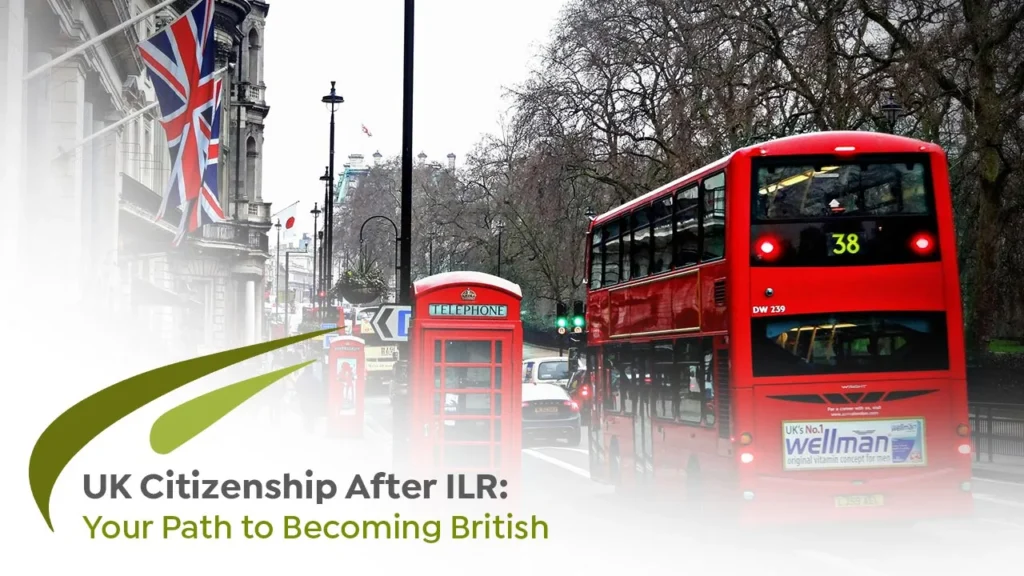Congratulations! You’ve secured Indefinite Leave to Remain (ILR) in the UK, granting you the right to live and work here permanently.
But your journey doesn’t end there. Maybe you dream of becoming a fully-fledged British citizen, enjoying the full rights and privileges that come with it.
This article is your comprehensive guide to navigating UK citizenship after ILR.
We’ll delve into the eligibility requirements, application process, and everything you need to know about becoming a proud British citizen.
Is UK Citizenship After ILR Right for You?
While ILR offers a stable position in the UK, citizenship unlocks additional benefits:
- The Right to Vote: Have your say in shaping the country you call home.
- Passport Power: Travel freely with a British passport, offering visa-free access to many destinations.
- Live and Work Anywhere in the UK: No immigration restrictions on your movement within the UK.
- Entitlement to Benefits: Access certain state benefits reserved for British citizens.
- Run for Public Office: Participate actively in British democracy.
Eligibility for UK Citizenship After ILR
The good news is, that having ILR paves the way for your citizenship application.
However, specific requirements need to be met:
- Residency: You must have resided in the UK for five years before applying.
This period includes the time spent leading up to your ILR application.
- Settled Status: You need to hold ILR for at least 12 months before applying for citizenship.
This waiting period doesn’t apply if you’re married to a British citizen.
- Good Character:
You must demonstrate a clean criminal record and no involvement in activities that could threaten national security.
- English Language Proficiency:
You need to prove your ability to speak, listen, read, and write English to a good standard.
This can be achieved through qualifications like GCSE English or the Life in the UK test.
- Life in the UK Test: Pass this test that assesses your knowledge of British life, values, and customs.
- Intention to Remain: You must demonstrate your intention to continue living in the UK, or have strong ties to the country.
The Naturalisation Process
Transitioning from UK citizenship after ILR involves several steps.
Here’s a detailed breakdown to help you through the process:
1- Prepare Your Documents:
- To initiate your journey towards UK citizenship after ILR, Collect all necessary documents, including your passport, biometric residence permit, proof of ILR, and evidence of residence.
Additionally, you may need documents that demonstrate your English language proficiency and details about your life in the UK, such as tax records and utility bills.
2- Complete the Application Form:
- Fill out the naturalization application form (Form AN) accurately and thoroughly. Ensure you provide all required information, such as personal details, residency history, and information about any previous immigration applications.
3- Pay the Fee:
- The application fee is £1,330.
This fee covers processing and administration.
Make sure you keep a copy of the payment receipt as proof of payment.
4- Book a Biometric Appointment:
- Attending a biometric appointment is a crucial step in the process. During this appointment, you will provide fingerprints and photos. Your biometric information serves to verify your identity and authenticate your application for UK citizenship after ILR. Promptly scheduling and attending this appointment expedite the verification process.
5- Submit Your Application:
- Submit your completed application form, supporting documents, and biometric information.
Double-check that all documents are included and correctly filled out to avoid delays or rejections.
6- Attend a Citizenship Ceremony:
- You will be invited to attend a citizenship ceremony if your application is approved. During this ceremony, you will take an oath of allegiance to the UK and receive your certificate of naturalisation, marking the official completion of your journey to becoming a British citizen.
Each step in the naturalisation process is essential for ensuring your application is successful.
By meticulously following each step outlined above, you can navigate the process of obtaining UK citizenship after ILR smoothly and efficiently. Remember to emphasize your ILR status throughout the application process to ensure clarity and expedite processing.
Detailed Steps to Apply for a British Passport After ILR
Once you have obtained UK citizenship, the next step is to apply for a British passport. Here’s how:
- Gather Required Documents:
UK citizenship certificate.
Proof of identity (e.g., current passport or driving license).
Two recent passport-sized photos.
Proof of address.
- Complete the Passport Application Form:
Fill out the form online or on paper. For first-time applicants, Form PC01 is used.
- Get Your Photos Certified:
If applying for the first time, one of your photos needs to be certified by a professional or a person of good standing in the community.
- Pay the Application Fee:
The fee for a standard adult passport (34 pages) is £75.50 if applied online and £85 if applied by paper.
- Submit Your Application:
Send your completed form, supporting documents, and photos to the address provided on the application form or submit them online.
- Attend an Interview (if required):
First-time adult applicants may need to attend an interview to confirm their identity.
Tips for a Successful Application
Successfully navigating the journey to UK citizenship after ILR requires careful attention to detail and thorough preparation.
Here are some essential tips to help ensure your application process is smooth and successful:
Double-Check Your Application:
- Ensure all information is accurate and complete to avoid delays. Mistakes or missing details can result in your application being returned or rejected, which can significantly extend the processing time.
Carefully review each section before submission.
Keep Copies of Your Documents:
- Retain copies of all submitted documents for your records.
Having a complete set of duplicates can be invaluable if any issues arise or if additional information is requested.
It also helps you keep track of what has been submitted.
Track Your Application:
- Use the tracking service to monitor the progress of your application.
This feature allows you to stay informed about the status of your application and anticipate any next steps or requirements.
Keeping an eye on the timeline can help you plan accordingly.
Prepare for Your Interview:
- If called for an interview, be prepared to answer questions about your background and reasons for applying for a British passport.
Practice common questions and ensure you have a clear understanding of your personal history and motivations.
This preparation can help you present yourself confidently and accurately during the interview.
By following these tips, you can enhance your chances of a successful application and avoid common pitfalls that can lead to delays or rejections.
Each step is crucial in demonstrating your eligibility and commitment to have UK citizenship after ILR.
Common Pitfalls to Avoid
While the path to UK citizenship after ILR is straightforward, there are several common pitfalls that applicants should be aware of.
Avoiding these can help ensure a smooth application process and increase the likelihood of success.
Incomplete Documentation: Missing or incorrect documents can lead to application rejection. Double-check the list of necessary documents and confirm that each one is accurate and up-to-date
Incorrect Fees: Ensure you pay the correct fee for your application type to avoid delays.
Verify the current fee before submitting your application, as fees can change.
Failure to Meet Residency Requirements: Carefully calculate your absences from the UK to ensure compliance. Maintaining accurate travel records can help you meet these requirements and avoid disqualification.
Conclusion
Obtaining UK citizenship after ILR is a structured process that requires careful preparation and adherence to guidelines.
The benefits of full citizenship, including the ability to apply for a British passport, make the effort worthwhile.
Remember, seeking advice and assistance from reputable sources like Freshstart UK can provide invaluable support throughout your application process.
Their expertise and guidance can help you navigate any challenges you may encounter, ensuring a smoother journey to obtaining UK citizenship after ILR.
With determination, preparation, and the right support, you can successfully achieve your goal of becoming a British citizen and enjoy all the rights and privileges that come with it.








